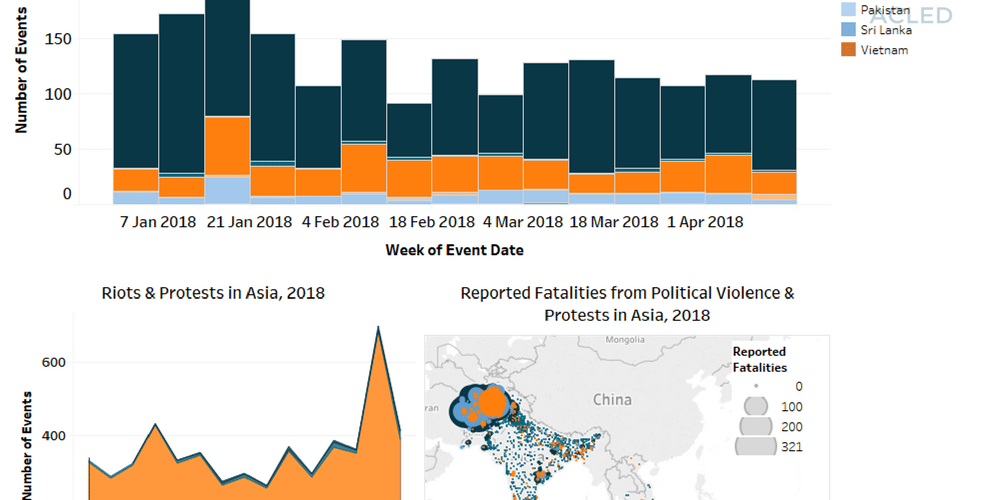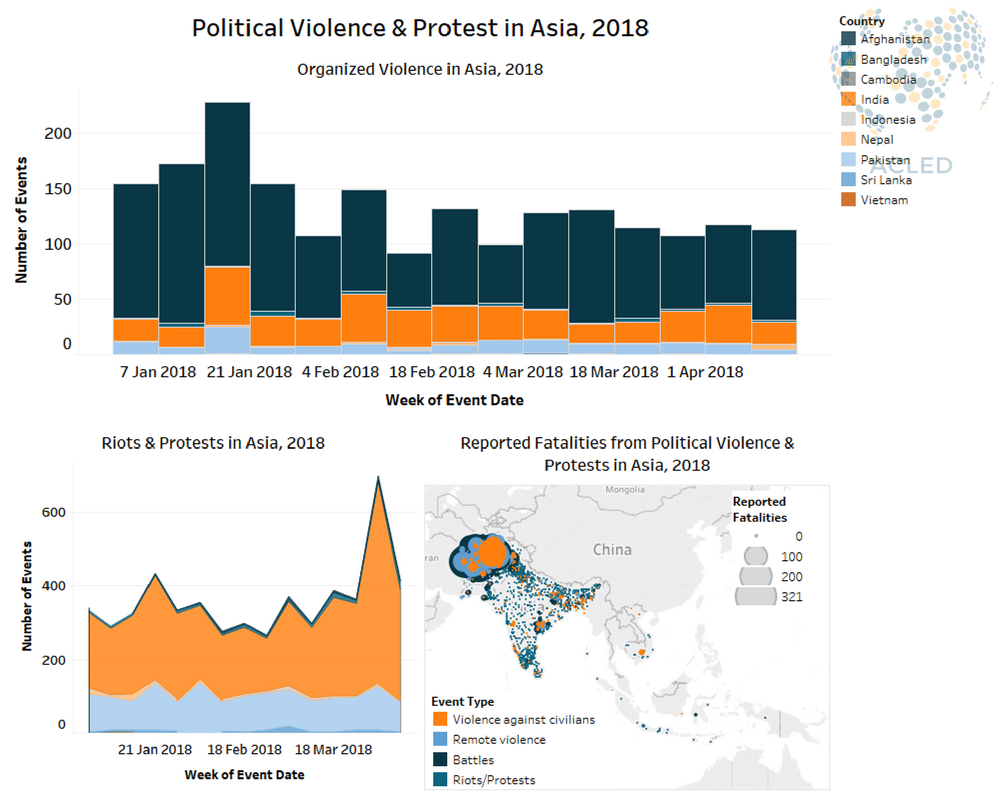Over the course of the last week, the levels of political violence and protest remained high in several South Asian countries while they remained low in Southeast Asian countries. With data on political violence in India, as well as in the Jammu & Kashmir region, both now available for download, trends in India as well as Jammu & Kashmir are explored below as well.
The Afghan military ramped up its military operations against the Taliban in Afghanistan, and in Nepal the Communist Party of Nepal-Maoist (CPN(M)) was behind several incidents of political violence – including bombings and attacks on civilians.
Increased protest levels were also reported in Bangladesh, Pakistan, and Afghanistan. Students from universities across Bangladesh continue to stage demonstrations in support of reforms to the country’s quota system for civil service jobs. On April 11, the Bangladesh government gave in to protesters’ demands and abolished the quota system (The Wire, 12 April 2018). Tehreek-e-Labaik Pakistan (TLP) also led a successful protest movement in Pakistan’s Punjab province demanding the closure of cases against their leaders, among other concessions (Voice of America, 14 April 2018). In Afghanistan, anti-violence protests continue across the country, with sit-in demonstrations expanding to five additional provincial capitals – Nimruz, Kunduz, Kandahar, Farah and Parwan.
Well over a third of all political violence in India is consistently concentrated in Jammu & Kashmir state. The two main conflicts there are between the Indian and the Pakistani militaries along the Line of Control (LoC), as well as between Indian government forces and militant groups, such as Pakistani Lashkar-e-Taiba (LeT) and Hizb-ul-Mujahideen (HM). The militaries of Pakistan and India continued to engaged in cross-border violence across the Line of Control (LoC) last week, leading to several reported fatalities.
Nearly a third of political violence in India occurs in the so-called ‘Red Corridor’, which spans over a vast territory in eastern, central, and southern India. Political violence in that area is connected to the ongoing Naxalite-Maoist insurgency – led by the Communist Party of India (Maoist) – who is seeking to overthrow the Indian government. In a continuation of recent communist violence in India, Maoist insurgents targeted government security personnel in Chhattisgarh’s Bijapur district last week, leaving two police personnel dead and five injured.
Over 90% of all events in India are riots and protests. The number of demonstrations are highest in northern India, including the Jammu and Kashmir region. The majority of demonstrations are over political, labor, and law and order issues. Protest levels in India declined after the previous week’s spike though remained higher than that seen in recent weeks. Since March 20, Dalits have been taking to the streets to join nationwide protests against a Supreme Court verdict on the Scheduled Caste & Scheduled Tribe Act. Several demonstrations turned violent resulting in some deaths and hundreds injured (The Times of India, 3 April 2018). In addition to the ongoing Dalit demonstrations, thousand of Indians have been protesting last week, demanding justice and improved protection for women. Protests erupted in light of recent incidents of sexual assault – including the rape-murder of an 8-year-old girl in Jammu and Kashmir (Al Jazeera, 15 April 2018).
(Data on Thailand and Myanmar have not yet been released; trends are hence not explored above.)







